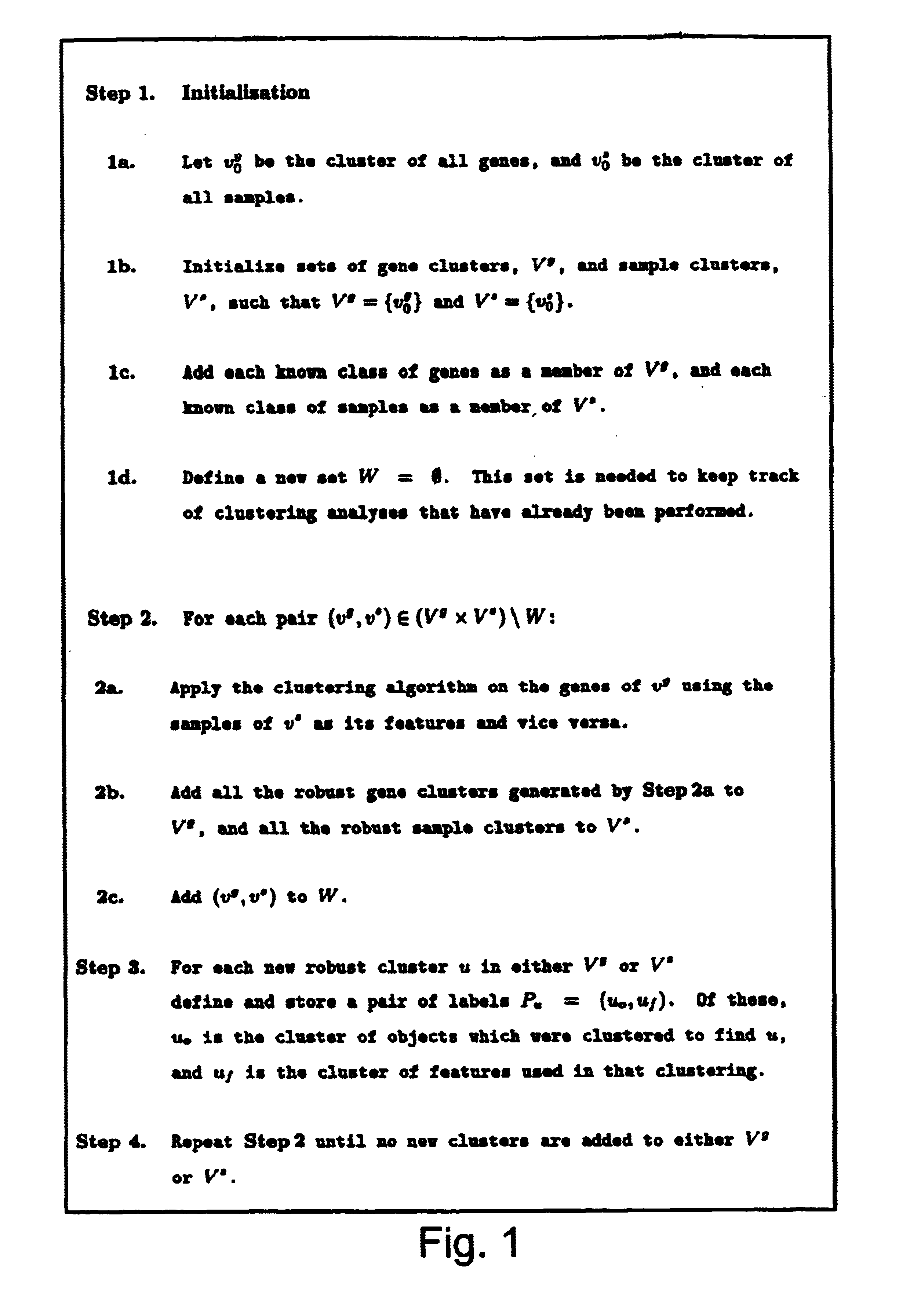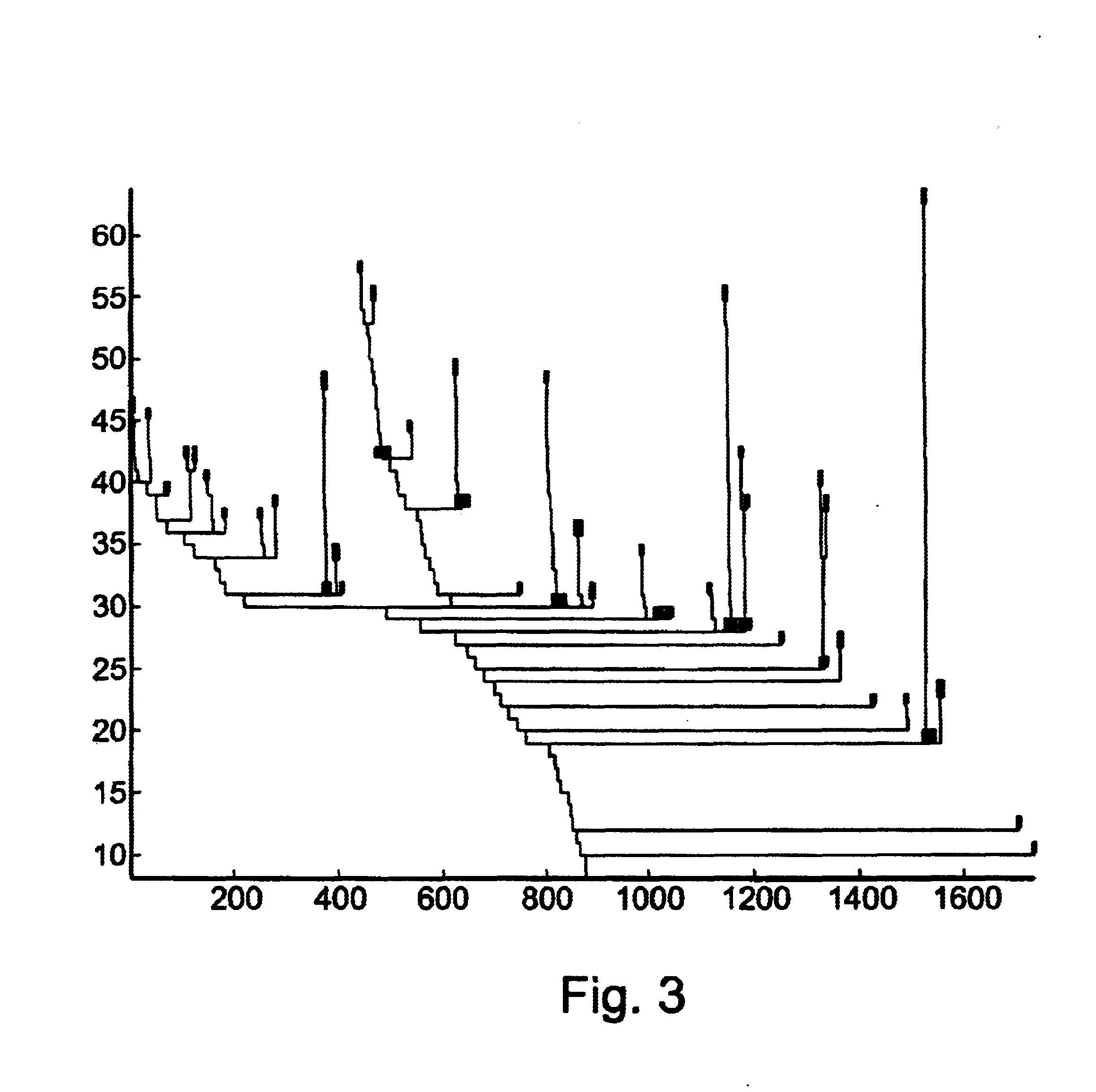Coupled two-way clustering analysis of data
a clustering analysis and data technology, applied in the field of data clustering analysis, can solve the problems of significant reduction of achieve the effect of lowering the utility and strength of the resulting analyses
- Summary
- Abstract
- Description
- Claims
- Application Information
AI Technical Summary
Benefits of technology
Problems solved by technology
Method used
Image
Examples
Embodiment Construction
[0050]The present invention is of a method for coupled two-way clustering, which is able to identify subsets of objects when characterized by a set of features, such that stable and significant partitions emerge. The method of the present invention preferably uses iterative clustering in order to execute this search in an efficient way. Optionally, both the features can be used to cluster the objects and vice versa, for a complete examination of the effect of coupling these two parameters on the emergence of stable clusters and partitions.
[0051]For example, according to the method of the present invention, a first plurality of items, such as genes, can optionally be used to partition a second plurality of items, such as the samples for being analyzed according to a characteristic of the genes, and vice versa. For example, the samples can be analyzed in order to determine the expression level of a particular gene or genes, such that the expression level would be an example of a chara...
PUM
| Property | Measurement | Unit |
|---|---|---|
| sizes | aaaaa | aaaaa |
| signal-to-noise ratio | aaaaa | aaaaa |
| strength | aaaaa | aaaaa |
Abstract
Description
Claims
Application Information
 Login to View More
Login to View More - R&D
- Intellectual Property
- Life Sciences
- Materials
- Tech Scout
- Unparalleled Data Quality
- Higher Quality Content
- 60% Fewer Hallucinations
Browse by: Latest US Patents, China's latest patents, Technical Efficacy Thesaurus, Application Domain, Technology Topic, Popular Technical Reports.
© 2025 PatSnap. All rights reserved.Legal|Privacy policy|Modern Slavery Act Transparency Statement|Sitemap|About US| Contact US: help@patsnap.com



